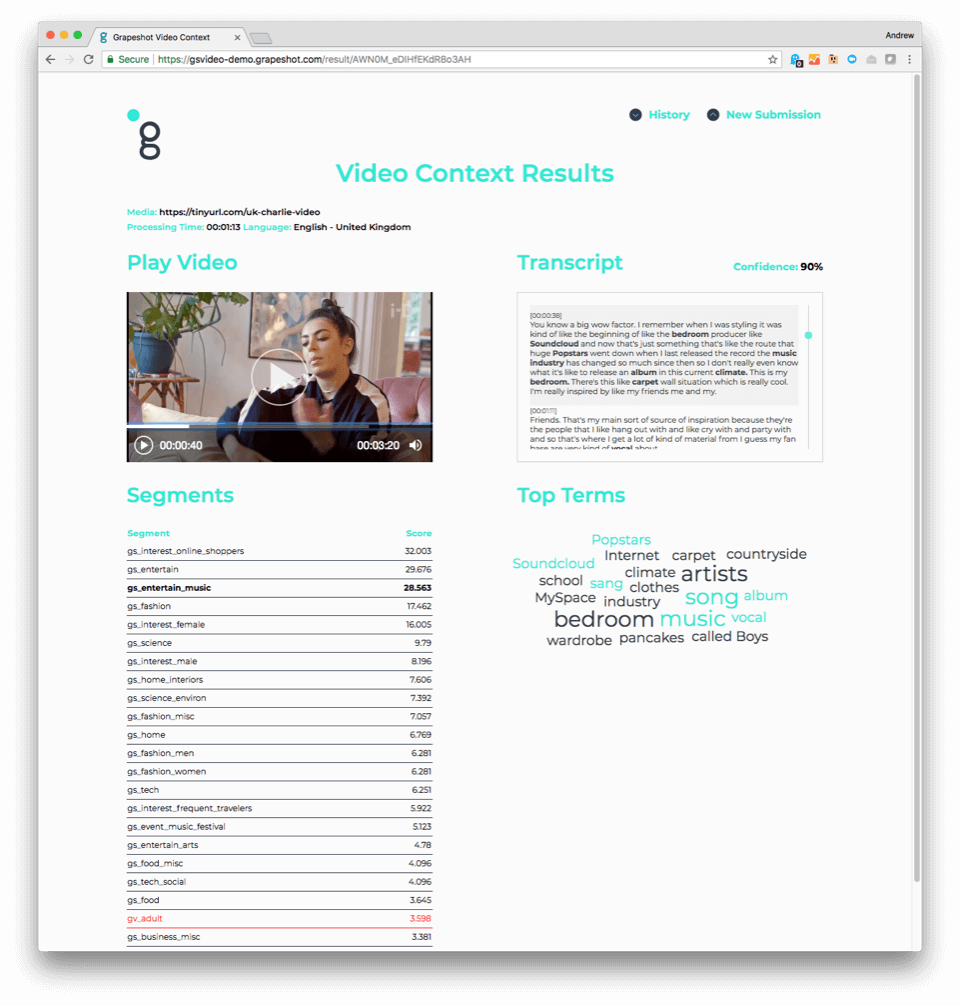Oracle-owned Grapeshot launches a contextual targeting solution for video ads
Called Video Context, it employs automated transcriptions from video content’s audio tracks to categorize the video for instream ad placement.

Contextual intelligence provider Grapeshot, whose purchase by Oracle was announced last month, is out this week with a new solution for targeting ads inside video.
Called Video Context, it turns the audio track of video content into text, and then analyzes that text to categorize the content. Then, that categorization is embedded into a video player, so that a video advertiser knows the video content categories before sending a video ad to play inside the content video.
For instance, if a publisher creates a two-minute video about the battery life in electric cars, Video Context analyzes the audio-to-text transcription of that story to automatically categorize it. Then, that categorization is made available to advertisers, who know that they would best deploy an ad about, say, premium tires rather than one about diapers.
SVP of Product Andrew Smith told me that his company is offering the “first contextual video ad targeting solution” for instream ads, based on context provided by the video’s audio track.
Instream ads appear at the beginning, middle or end of content videos. Previously, Grapeshot’s focus has been on scanning the full text of web pages to determine if they were appropriate for specific kinds of static and outstream video ads, which are standalone or inside articles. This is the first time it has begun analyzing video content for ad placement.
Smith acknowledged that automated audio transcriptions from videos are used elsewhere, but he said the technique wasn’t employed for this purpose.
He also noted that providers of content video often provide metadata about that video for ad targeting, gleaned from human categorization. But, Smith said, it is “generally completely discarded” by the advertiser because it’s not always reliable, and the advertiser has often ended up targeting the ad by site category, such as ads appropriate for video content on the Motor Trend site.
Video Context is being considered more accurate by advertisers, Smith said, because of Grapeshot’s credibility in the industry. He added that there were no stats yet on whether this approach hits the target audience more reliably than other solutions.
Currently, Grapeshot’s new solution is only available for recorded video, not livestreams, although Smith said that support for live transmissions is coming. Video Context is currently utilized by supply-side platforms and publishers for direct sales or programmatic contract sales, Smith noted, but not yet for real-time bidding. Grapeshot will support RTB once there is a sufficient critical mass for the new solution, he said.
Here’s a screen shot showing ad targeting categories returned by Video Context’s analysis of the soundtrack of a video:
Contributing authors are invited to create content for MarTech and are chosen for their expertise and contribution to the martech community. Our contributors work under the oversight of the editorial staff and contributions are checked for quality and relevance to our readers. MarTech is owned by Semrush. Contributor was not asked to make any direct or indirect mentions of Semrush. The opinions they express are their own.
Related stories
New on MarTech
